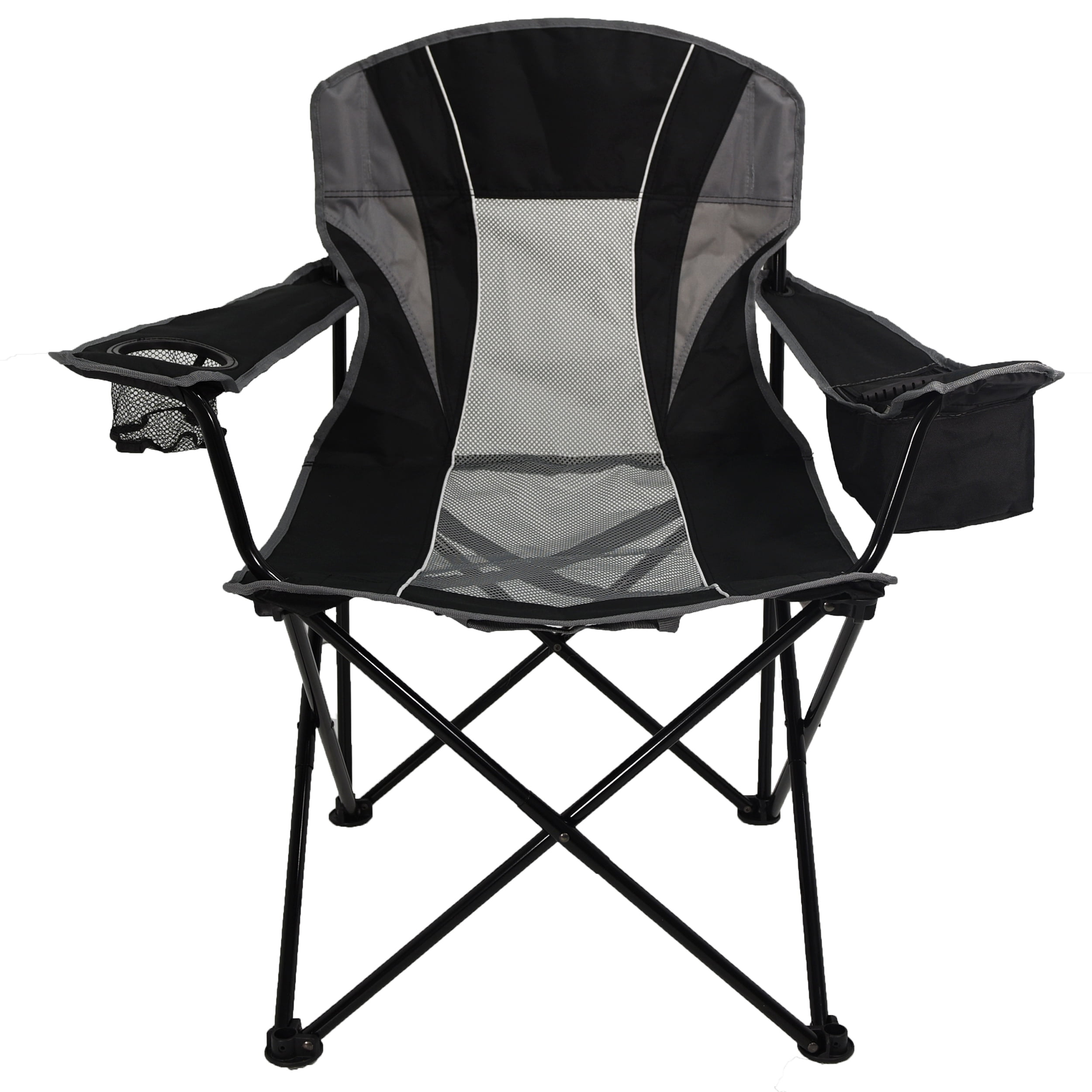Ozark Trail Basic Chair Black


The Ozark Trail Basic Chair Black represents a quintessential example of the budget-conscious outdoor recreation market. Its affordability makes it a tempting option for casual users, but a closer examination reveals a product whose strengths and weaknesses are inextricably linked to its price point. This analysis will dissect user experiences to illuminate the realities of owning this seemingly simple piece of camping equipment.
Comfort and Ergonomics
The Ozark Trail Basic Chair Black’s comfort is frequently cited as a point of contention. While adequate for short periods of sitting, many users report discomfort during prolonged use. The lack of lumbar support and the relatively flat seat contribute to back pain and stiffness, particularly for individuals with existing back problems. The chair’s simple design, while contributing to its lightweight portability, sacrifices ergonomic considerations that would enhance user comfort. The thin fabric and basic frame design fail to provide adequate cushioning or support, resulting in a less-than-ideal seating experience for many.
Durability and Longevity
The chair’s durability is another area where opinions diverge sharply. While some users report satisfactory performance, many others describe instances of premature wear and tear. The thin metal frame is prone to bending or breaking under excessive weight or stress. The fabric is susceptible to tearing, particularly at stress points like the seams. Reports of broken welds and collapsed legs are common, indicating that the chair’s longevity is often inversely proportional to the intensity of its use. The chair’s overall build quality often falls short of expectations, suggesting a design optimized for cost reduction rather than robust functionality.
Ease of Setup and Portability
The Ozark Trail Basic Chair Black scores higher marks in terms of ease of setup and portability. Its simple, folding design allows for quick and easy assembly and disassembly. The chair’s lightweight nature makes it highly portable, a significant advantage for those who prioritize ease of transport. This ease of use is a considerable selling point, compensating somewhat for the chair’s shortcomings in comfort and durability. However, the lightweight construction, while convenient, also contributes to the chair’s fragility.
Common User Complaints and Suggestions for Improvement
The following points summarize the most frequently reported user complaints and potential improvements:
- Lack of lumbar support: Incorporating lumbar support would significantly enhance comfort and reduce back pain.
- Thin and easily torn fabric: Using a more durable, thicker fabric would improve the chair’s longevity.
- Weak frame: Strengthening the metal frame and improving weld quality would enhance durability and prevent breakage.
- Limited weight capacity: Increasing the weight capacity would make the chair suitable for a wider range of users.
- Uncomfortable seating surface: Adding padding or a more contoured seat would enhance comfort during prolonged use.
Ozark Trail Basic Chair Black


The Ozark Trail Basic Chair Black represents a stark, almost brutal, minimalism in outdoor seating. Its simplicity, while initially appealing for its affordability and portability, reveals a more complex picture when subjected to the rigors of practical use and compared to available alternatives. This examination will explore the chair’s suitability in various contexts and critically assess its strengths and weaknesses against competitor products.
Usage Scenarios for the Ozark Trail Basic Chair Black
The Ozark Trail Basic Chair Black finds its niche in scenarios demanding inexpensive, easily transportable seating. Its primary appeal rests in its low cost, making it a disposable option for certain uses. Camping trips where durability is secondary to affordability, casual backyard gatherings where comfort is less critical, and tailgating events where ease of transport is paramount all represent suitable use cases. The chair’s lightweight design is a significant advantage in these situations, facilitating quick setup and transport. However, its limitations become apparent when comfort and longevity are prioritized.
Alternative Seating Options for Camping
For camping, alternatives to the Ozark Trail chair range from lightweight, packable camp chairs offering superior comfort and durability to more robust folding chairs designed for extended use. Higher-end camp chairs, though more expensive, often feature padded seats and backs, providing significantly improved comfort during long periods of sitting. Conversely, heavier-duty folding chairs, while durable, may lack the portability of the Ozark Trail option. The trade-off lies between cost, comfort, and portability; the Ozark Trail chair prioritizes the first two at the expense of the last.
Alternative Seating Options for Tailgating
In the tailgating context, the Ozark Trail chair’s portability is again advantageous. However, competitors offering better comfort and weather resistance are readily available. Folding stadium seats, though bulkier, often provide superior back support and sometimes include cup holders. Inflatable chairs, while offering a different type of comfort, may prove less durable and susceptible to punctures. The choice hinges on the balance between portability, comfort, and the potential for damage or wear and tear during the often rowdy atmosphere of a tailgate party.
Alternative Seating Options for Backyard Use, Ozark trail basic chair black
For backyard use, the Ozark Trail chair’s limitations become more pronounced. The lack of comfort and durability makes it a less attractive option compared to a variety of alternatives. Traditional Adirondack chairs, though more expensive and less portable, provide superior comfort and aesthetic appeal. Patio chairs made from wicker or metal offer greater durability and weather resistance. Even simple folding lawn chairs often provide more comfort and sturdiness than the Ozark Trail Basic Chair Black. The choice here largely depends on the desired level of comfort and longevity versus the initial cost.
